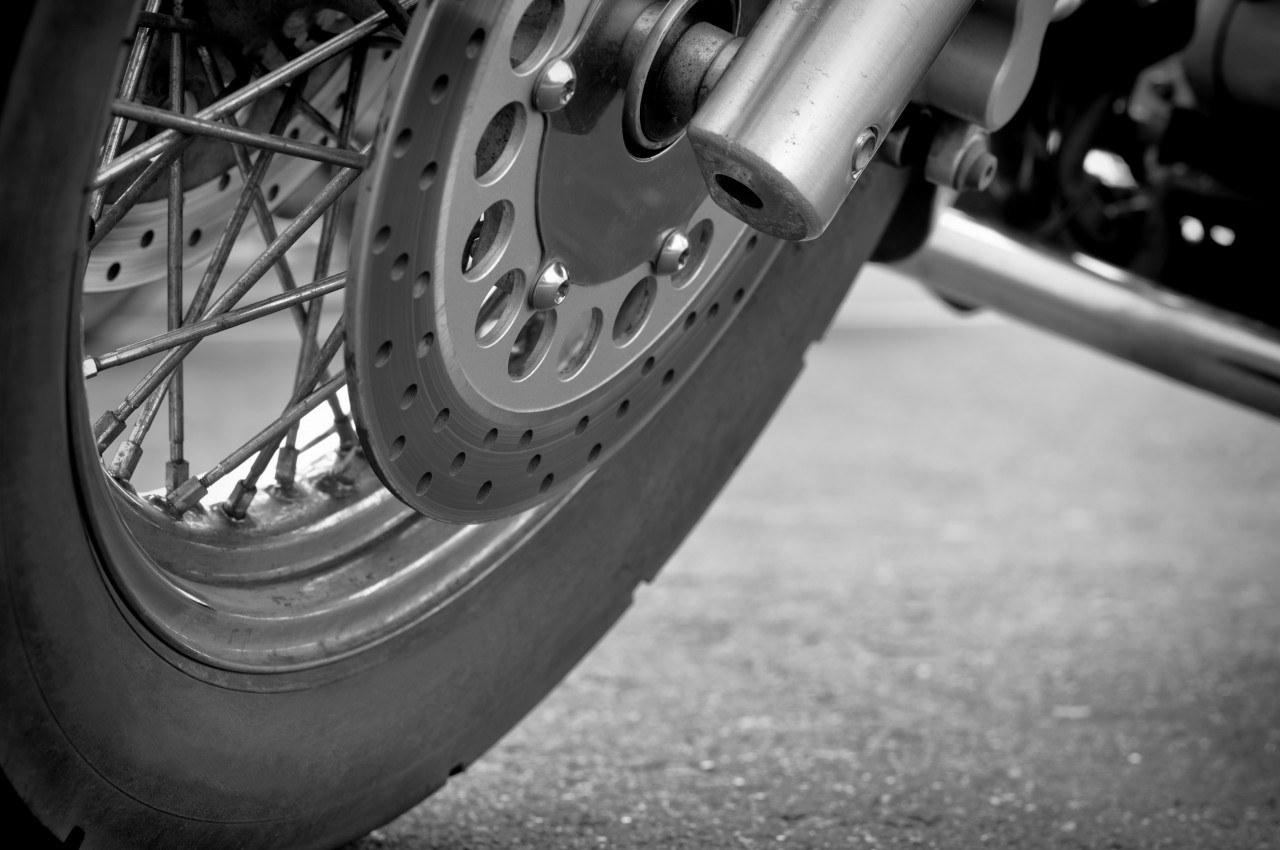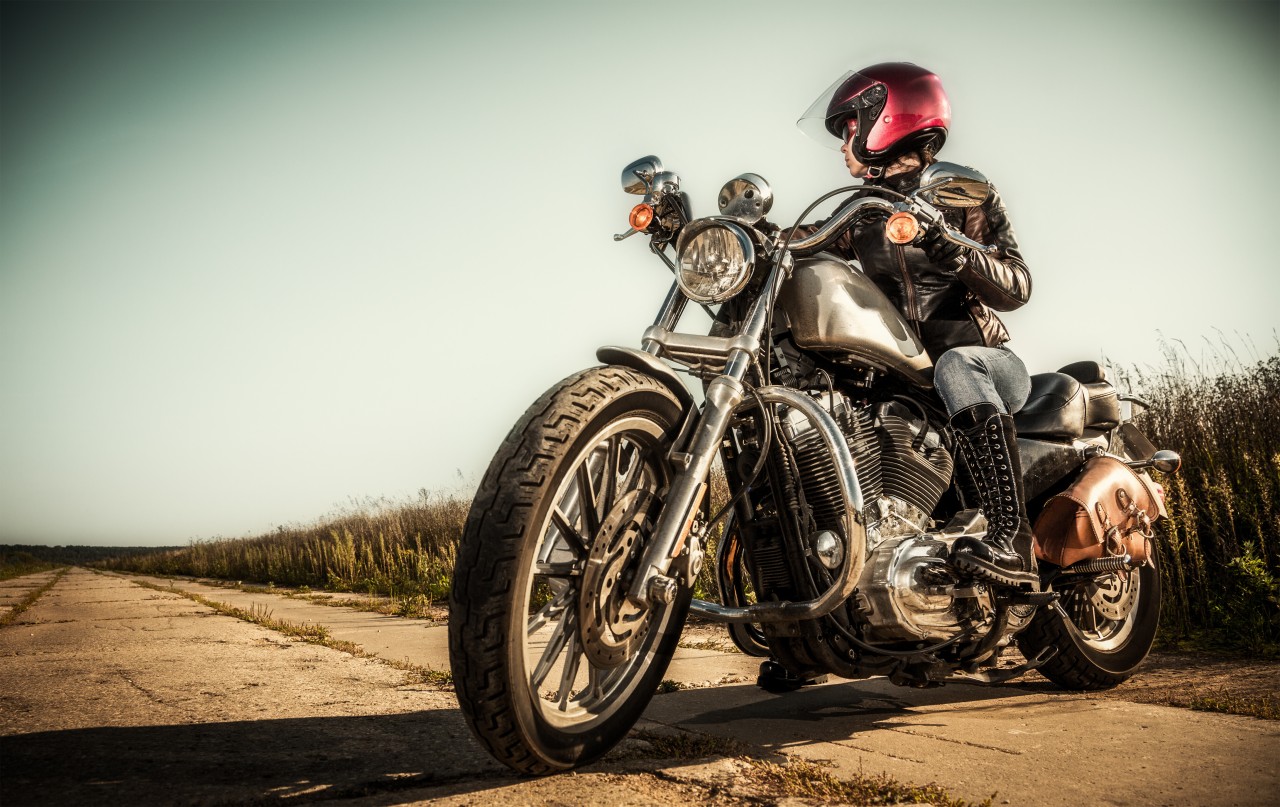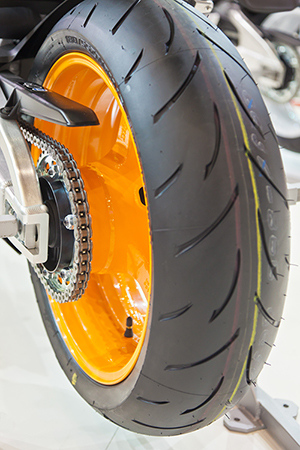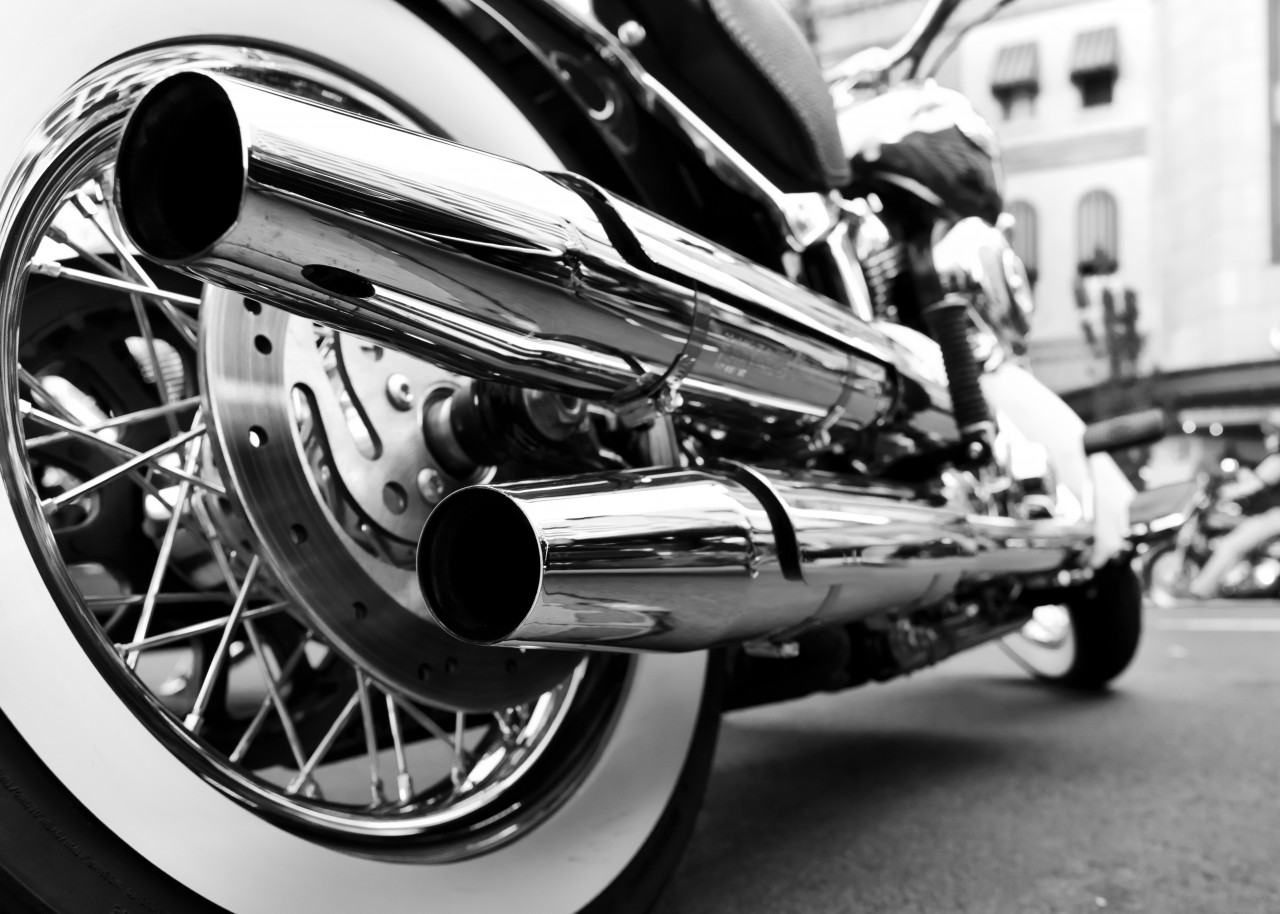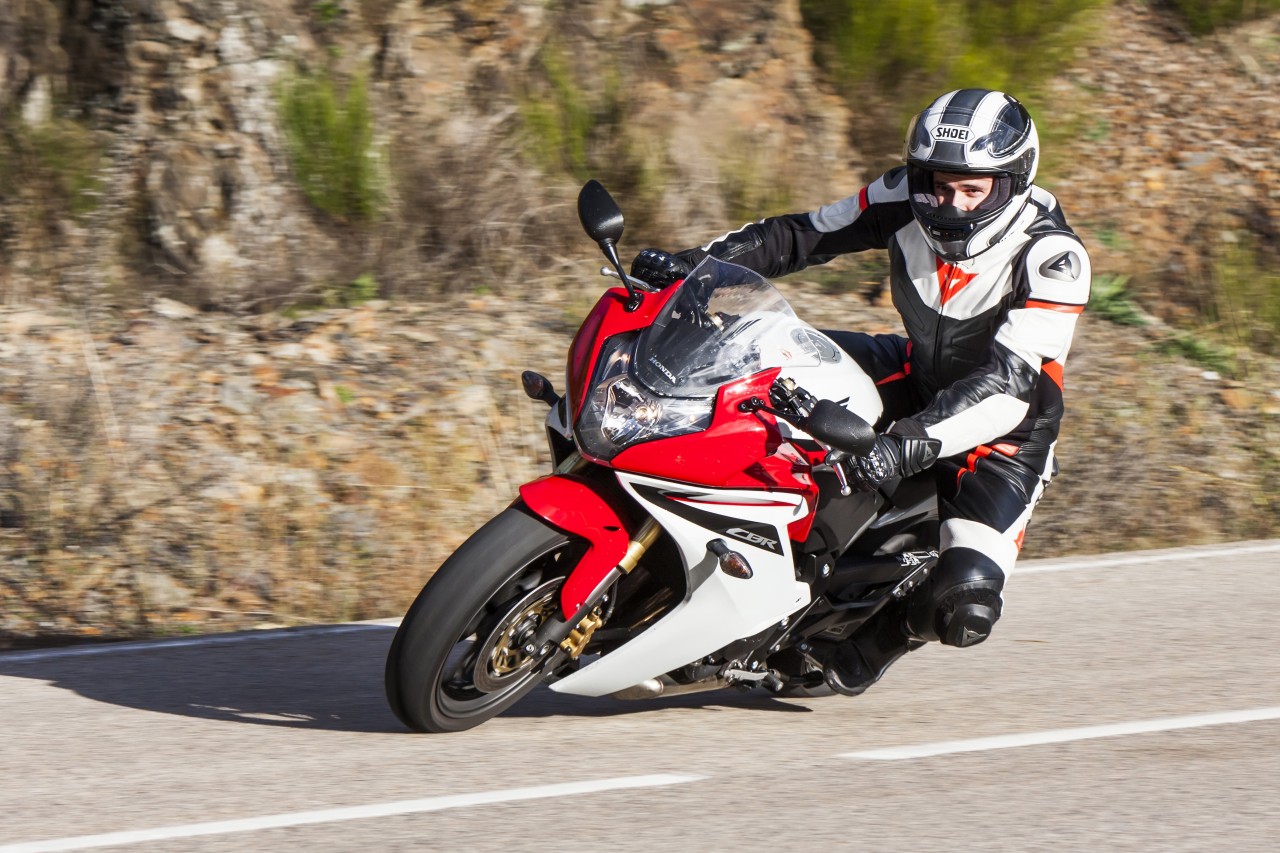In recent years there have been considerable advances when it comes to tyre technology. As such, choosing the right tyres for your motorcycle has become a little less straightforward, although once you have the right tyres you will get considerably more from your bike than you might have done before.
The first step to ensuring that you select the best type of tyre for your motorcycle is to know what its primary use will be. It may seem like common sense but you would be surprised at how many people purchase ‘race’ tyres even though they have no intention of ever taking their bike anywhere near a racing track!
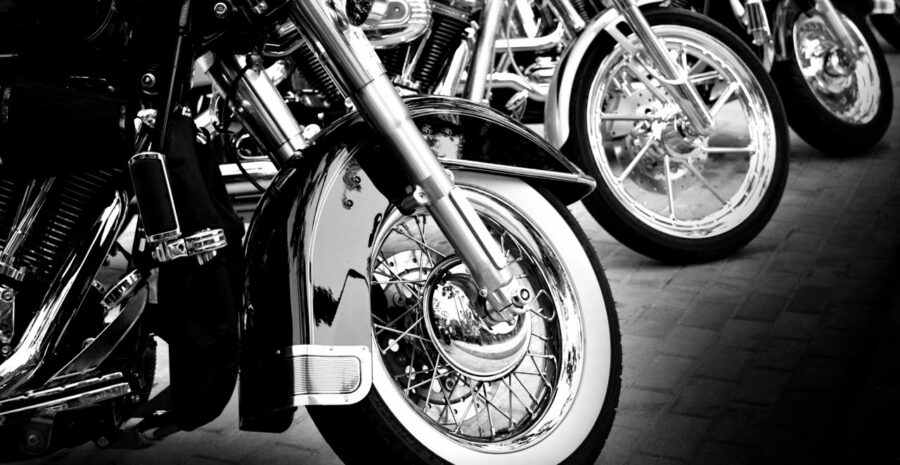
So, before you even begin to look at the different types of tyres on offer you need to consider why you are buying a motorcycle: do you want a large touring bike to enjoy the open road or are you looking to invest in a racing bike? It’s important that you are honest about your intentions; otherwise you could end up spending a whole lot of money for not a lot of tyre.
If you still need convincing then think about it this way, if you are mostly going to be riding long distances then why spend your money on a sport tyre that will wear out faster than a touring tyre? Although you might like the look, it will ultimately end up costing you more money as you will need to replace the tyres on a more regular basis.
Once you have ascertained what the primary use of your motorcycle is going to be, then you can start to delve into the world of tyres, of which there are a lot! Whilst an understanding of the jargon isn’t necessarily important, it can help to understand the basics of tyre technology so here is quick guide:-
Tread
This is the part of the tyre which makes contact with the road, and is generally the part most people consider. In the UK there are regulations on how worn a tread can become before the tyre becomes un-roadworthy so it is always worth checking your tyres over on a regular basis. In basic terms, you want a smooth tyre for fairly even, dry surfaces and a chunkier tyre if you plan to go off-road. You can also buy tyres with specialist treads to help with driving on surfaces such as snow and sand.
Bead
This is generally a steel wire which is covered in heavy rubber and it is the part which connects the tyre to the wheel.
Carcass
This is the body of the tyre. Typically you get two sorts with motorcycle tyres: bias-ply or radial. Bias-ply tyres have cord-like belts which run from bead-to-bead on a 30-40 degree angle. These belts are usually made of polyester, aramid or fibreglass. Radial tyres have steel belts which run from bead-to-bead along the tread of the tyre.
Sidewall
The sidewall is just a small part of the tyre but is one of the most important parts. The size of your sidewall can affect how the motorcycle handles, how it turns and even the suspension capabilities.
Of course, the best thing you could do, especially if you are new to the world of motorcycles, would be to ask the advice of a specialist. Ask around for recommendations of tyre dealers, especially if you know of other people who have similar bikes to your own. Perhaps you are a member of a biker group, ask one of your mates there, speak to your insurance company or ask your dealership.
If you have a basic grasp of the jargon and an understanding of what you are going to ask of your motorcycle then you should be fine. A specialist will be able to answer any and all questions you may have about width of tyres, whether it’s okay to mix radial and bias-ply tyres, the size of the tubing you need and much more. It is their job to be able to offer advice and so we would strongly recommend speaking to a professional, even if in the end you decide not to purchase your tyres through them.
If you decide to go it alone, you can still turn to the tyre manufacturers. The manufacturers will have put a lot of thought into the design and development of their tyres and they should have a comprehensive list of which bikes their tyres are best suited for.
You should also be able to get a more in-depth idea about handling, stability and response. It’s important that you check the manufacturers guide before you purchase your tyres, even if you have received a recommendation for that particular tyre.
Just because a tyre is the right size doesn’t necessarily mean it is right for your bike and this is a crucial point which cannot be stressed enough. If you want to get the best out of your motorcycle then it is imperative that you purchase suitable tyres.
Alternatively, you could create a list of the things which your tyres need to have and then visit a dealer with this list in mind. If you are going to be inspecting the tyres then it is worth noting that all the vital information about a tire; how big it is, what’s inside it and so on is on the tyre’s sidewall.
Another important aspect of your motorcycles tyres is knowing when they need changing; don’t just wait until you’ve got a flat! You should be regularly inspecting your tyres for the following:-
- Sidewall puncture
- Damaged tyre (seek professional advice on whether the damage is repairable)
- Puncture larger than a ¼ inch
- Any tyre which is over 10 years old
- A tyre which continues to have low pressure
- Cuts or slices to the tyre
- Missing tread blocks
- A worn tyre with less than 2/32 inches of tread on any part
- A tyre which is cracked circumferentially
- A tyre which is ‘feathered’ or ‘cupped’, you should notice a significant difference in driving conditions in this instance.
Ultimately the type of tyre that you choose to use is down to your own personal preference but hopefully this guide will have given you a good starting point.
Do you have any advice that you would like to share regarding purchasing the correct tyres for your motorcycle?
Perhaps you learnt the hard way, if you could go back is there one piece of advice that you wish someone had given to you? We would like to know, so comment on this blog!
